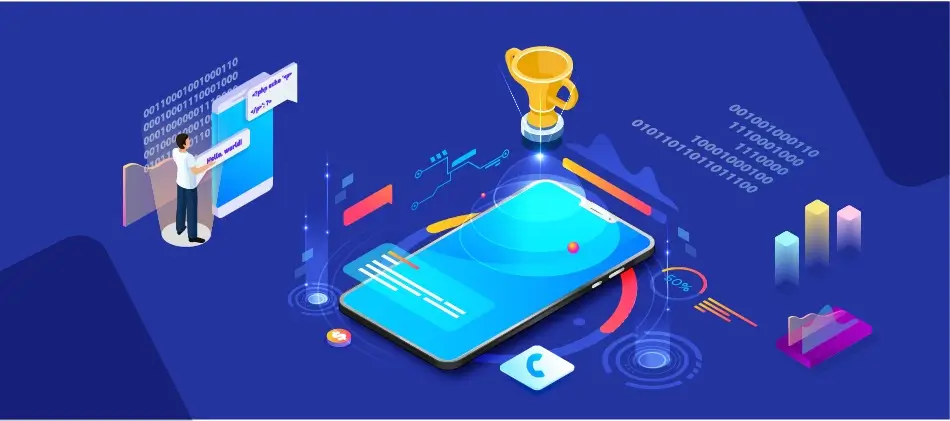
In the age of on-demand entertainment, video streaming platforms like Netflix have revolutionized the way we consume content. If you’re considering building your own video streaming app, you’re embarking on a challenging but rewarding journey. This article will walk you through the key steps and considerations involved in creating a video streaming app like Netflix.
Why Build a Video Streaming App?
Video streaming apps have become immensely popular due to their convenience, accessibility, and content variety. With more people cutting the cord on traditional TV, streaming platforms are gaining an ever-growing user base. The global video streaming market is expected to reach $184.3 billion by 2027, making it a lucrative industry to enter.
Before you jump into app development, it’s essential to understand the core features, infrastructure, and business model that make Netflix successful.
Key Features of a Video Streaming App Like Netflix
- User Profiles: Personalization is crucial for retaining users. Like Netflix, you should allow users to create multiple profiles under one account.
- Content Library: A vast library of video content including movies, TV shows, and original series should be organized by genre, popularity, and user preferences.
- Search and Filter Options: Users should easily search for specific titles, actors, or genres, and filter content based on their interests.
- Recommendations: Netflix’s recommendation algorithm is one of its most powerful features, offering content based on previous viewing habits.
- Subscription Plans: Offer tiered pricing models for users to select based on features like ad-free streaming, simultaneous screens, or premium content.
- Offline Viewing: Allow users to download content for offline viewing, which is highly appreciated by those with limited internet access.
- Multi-Device Synchronization: Ensure the app works seamlessly across smartphones, tablets, desktops, and smart TVs.
- Parental Controls: Offer tools that let parents restrict certain content and monitor their children’s activity.
Essential Steps to Building a Streaming Platform
1. Market Research and Competitor Analysis
Before starting the development process, thoroughly research the market and existing competitors. Analyze platforms like Netflix, Hulu, Disney+, and Amazon Prime Video. Identify the unique value proposition (UVP) that your app will offer. For example, will it focus on specific content genres or target a niche audience?
2. Define the Business Model
You’ll need to decide how your platform will generate revenue. Here are the main business models for streaming apps:
- Subscription-Based (SVOD): Users pay a recurring fee to access content. This is Netflix’s primary model.
- Ad-Based (AVOD): Offer content for free but monetize through ads. YouTube follows this model.
- Pay-Per-View (TVOD): Users pay for individual pieces of content rather than a subscription. Apple iTunes offers this.
- Hybrid Model: Combine two or more of these models for greater flexibility.
Once you choose the right business model, determine how much to charge users, the types of subscription tiers, and the payment methods you’ll offer.
3. Choose the Right Tech Stack
To build a robust, scalable, and secure video streaming app, selecting the right tech stack is essential.
- Backend Development: Use platforms like Node.js, Python (Django), or Ruby on Rails for building a server capable of handling multiple requests.
- Frontend Development: For the user interface, you can use frameworks like React Native or Flutter for cross-platform apps.
- Cloud Storage: You’ll need a reliable and scalable cloud solution to store your video content. Amazon Web Services (AWS), Google Cloud, or Microsoft Azure are top choices.
- Database Management: Store user data, video metadata, and app analytics using databases like MySQL, MongoDB, or PostgreSQL.
- Video Encoding and Compression: Use tools like FFmpeg or HandBrake to compress video files without sacrificing quality, ensuring faster load times.
- CDN (Content Delivery Network): A CDN ensures your video content is delivered quickly to users worldwide. Akamai, Cloudflare, and AWS CloudFront are commonly used CDNs.
- Media Player: Opt for ExoPlayer (Android) or AVPlayer (iOS) to ensure a smooth playback experience across devices.
[Read About: How to Build a Streaming Platform Like Filmlicious]
4. Content Licensing and Production
If you plan to offer movies and TV shows from third-party creators, you must negotiate licensing deals. This can be a complicated process as licensing agreements vary by region. You may also consider producing original content, similar to how Netflix has become known for its original shows and films.
5. User Experience and Interface Design
The design of your app should prioritize a seamless user experience (UX). A clean, intuitive interface encourages users to explore your content more thoroughly. Key design elements to focus on include:
- Easy Navigation: Users should be able to navigate the app easily across devices.
- Content Thumbnails and Previews: Use engaging visuals like thumbnails, trailers, and previews to draw users to specific content.
- Dark Mode: Many users prefer dark mode while watching videos, so offering this as a UI option is essential.
6. Implement Security and DRM Solutions
One of the most significant concerns for streaming platforms is the illegal distribution of content. You’ll need to implement Digital Rights Management (DRM) systems like Google Widevine, Microsoft PlayReady, or Apple FairPlay to prevent unauthorized distribution of your content. Additionally, ensure the app supports end-to-end encryption to protect user data.
7. Testing and Deployment
Before launching your app, thorough testing is required to ensure that the app functions smoothly across all devices and operating systems. Test the app for:
- Video Playback: Ensure there is no lag, buffering, or crashes during video playback.
- Load Testing: Simulate thousands of users accessing the platform at once to ensure your app can handle heavy traffic.
- User Interface Testing: Make sure that every button, link, and interface feature works as intended.
Once testing is complete, deploy your app to the appropriate app stores (Google Play, Apple App Store) and ensure that it is optimized for searchability.
Post-Launch: Marketing and User Retention
Launching a video streaming platform is just the beginning. To ensure long-term success, you’ll need to focus on:
- Content Marketing: Create blogs, social media posts, and email campaigns to promote your app.
- User Retention Strategies: Use push notifications, personalized recommendations, and exclusive content to keep users engaged.
- SEO Optimization: Optimize your app’s description and website for search engines using relevant keywords like “video streaming,” “on-demand TV,” and “Netflix alternatives.”
Conclusion
Building a video streaming app like Netflix requires a well-thought-out approach, robust technology, and a keen understanding of user needs. By following the steps outlined in this guide and staying informed of industry trends, you’ll be well on your way to creating a successful video streaming platform.

 Software Development
Software Development Food Delivery
Food Delivery Taxi Booking
Taxi Booking E-Commerce
E-Commerce Real Estate
Real Estate Healthcare
Healthcare



